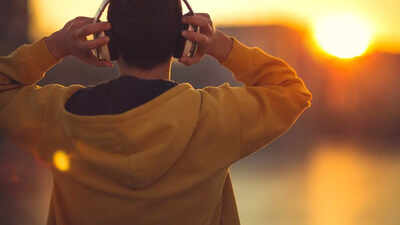Asteroid capture and space mining could become a reality: Know what it is and how this new technology works |

California-based aerospace startup TransAstra is developing a revolutionary inflatable device known as the Capture Bag. Designed in various sizes, this device aims to capture asteroids for mining purposes, as well as collect human-made space debris. Artist impressions illustrate how the bag could envelop small rocks or house-sized boulders in orbit, opening new possibilities for space resource utilisation.Asteroids are rich in precious and common metals. Despite the immense challenges of reaching them, a few innovative companies believe these celestial bodies offer a sustainable alternative to Earth-based mining. Traditional mining faces declining supply, environmental harm, and increasing costs, making space-based alternatives highly attractive.
How TransAstra’s capture bag enables efficient asteroid mining in space
TransAstra’s Capture Bag is an inflatable container made from aerospace-grade materials, including Kevlar and aluminium. It is designed to be leak-proof and mounted on a carrier vehicle, which releases it near a target. Upon deployment, the bag inflates to encompass the object, whether it is a small fragment or a large asteroid.The Capture Bag comes in six sizes, ranging from micro versions, small enough to fit in a coffee cup, to “super jumbo” bags capable of capturing a 10,000-ton asteroid, roughly the size of a small building. Initial tests aboard the International Space Station demonstrated that the bag could successfully inflate in microgravity and vacuum conditions, confirming its feasibility for orbital operations. “Asteroid mining is a highly risky and complex endeavour,” said Joel Sercel, aerospace engineer and founder of TransAstra. He explains that the process involves four critical stages: detection, capture, movement, and processing. Detecting suitable asteroids, safely capturing them, relocating them, and extracting minerals requires advanced technology and precise coordination.TransAstra claims to have developed technology covering all these areas and has secured around 21 patents, with new patents issued nearly every month. Preliminary tests, funded by private investors and NASA, are paving the way for a larger, fully functional Capture Bag designed to retrieve both space debris and valuable asteroids.
TransAstra tracks Earth-like asteroids for future mining missions
TransAstra is focused on asteroids with Earth-like orbits that drift slowly past our planet, making them accessible for mining missions. Hundreds of these objects have already been identified, and the company plans to capture its first asteroid by 2028. This milestone could mark the beginning of an industrial revolution in space.To support these missions, TransAstra has deployed a network of telescopes called Sutter across Arizona, California, and Australia, with a fourth planned in Spain. Named after the California gold discovery site that triggered the gold rush, these telescopes aim to identify asteroids with the highest potential for resource extraction.
10-metre Capture Bag by TransAstra secures asteroids and space debris
TransAstra’s next step involves developing a 10-metre Capture Bag, partially funded by NASA. Before targeting valuable asteroids, the bag will be tested on space debris to mitigate risk. This large bag will also be capable of removing obsolete satellites from “graveyard orbits,” solving navigational hazards while providing a platform for asteroid capture.The company emphasises that returning mined materials to Earth is economically impractical. Instead, materials would be processed in space to support the construction of spacecraft and other space infrastructure, reducing dependency on terrestrial resources. Space junk has become an increasing concern, with millions of fragments orbiting Earth. Various technologies have been proposed to capture debris, including robotic arms, magnets, and harpoons. The Capture Bag offers a simpler and more versatile solution, capable of securing objects of varying shapes, sizes, and rotational dynamics at a lower cost than complex robotic systems.Experts like Eleonora Botta, associate professor of Mechanical and Aerospace Engineering at the University at Buffalo, highlight the bag’s potential: “Its versatility is crucial for asteroid capture and managing orbital debris. Deploying large, flexible structures in space is challenging, but TransAstra’s approach appears promising.”






